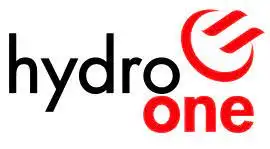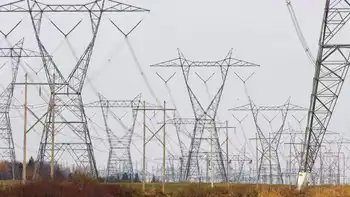Tariff would help Hawaii achieve green goals
By Honolulu Star-Bulletin
High Voltage Maintenance Training Online
Our customized live online or in‑person group training can be delivered to your staff at your location.

- Live Online
- 12 hours Instructor-led
- Group Training Available
Even more impressive is Germany's wind energy. With 24 gigawatts of wind power installed, Germany has six times as much wind per person as Hawaii.
How did Germany become a global leader in clean, renewable resources?
Twenty years back it enacted a law called a "feed-in tariff" for clean energy. A feed-in tariff (FIT) is a somewhat clumsy name for a policy that sets a fair price and standard 20-year contract for "green" electricity. That means an international solar company or a wind developer on the Big Island knows exactly at what price he can sell electricity from his project.
By removing uncertainty in the clean energy marketplace, Germany opened the floodgates to renewable energy investment and growth. Since then, nearly 40 places around the world, from Europe to Canada to Australia, have adopted similar FITs, making FITs among the most popular and successful policies ever for growing clean energy economies.
Hawaii is poised to become the first state in the nation to adopt a FIT similar to Germany's. The policy is currently under consideration by the Public Utilities Commission. By providing transparent conditions and a "no haggle" price for clean energy, a FIT will enable renewable energy providers to more easily calculate whether their project will pencil out. They will no longer face costly and time-consuming individual contract negotiations with the utilities. Like in Germany, Hawaii's FIT will give green power the green light.
Implementing a robust FIT offers significant benefits for Hawaii:
• Diversifying our sources of electricity helps get Hawaii off oil. Hawaii is dependent on fossil fuel for more than 90 percent of its electricity and sends upward of $2 billion annually to oil countries such as Saudi Arabia and China. Although last summer's high prices have waned, we know that oil won't stay cheap forever. Plugging in more clean power from indigenous sources of energy allows Hawaii to take control of its energy costs.
• Economic development and technological innovation will be spurred by a Hawaii FIT. Hawaii can stake a claim as a global leader in developing strategies to integrate renewable energy into power grids. With that know-how, Hawaii can export technologies and expertise to states and countries seeking higher levels of renewable energy use.
• Green jobs will follow adoption of a robust FIT. Because it is more labor intensive and less fuel intensive than conventional energy, clean energy creates more jobs and has a higher multiplier impact on local economies. Germany, for example, employed more than 280,000 workers in the renewable energy industry in 2008, an increase of more than 120,000 jobs since 2004.
So what about cost? Won't ratepayers be pinched in this proposal to buy clean power at a premium?
Germany established more aggressive FITs in 2000, with some of the tariffs paying clean energy providers four times or more than the going rate of electricity. What did this cost German ratepayers? Not much, it turns out. Analysis shows the average ratepayer paid an extra penny per kilowatt-hour — or about 3 percent of their household electricity costs.
That's not bad, considering the 5- to 10-cent increase per kilowatt-hour in Hawaii during last summer's oil price spike.
Even if Hawaii FIT rates cause a small bump in the short term, over the long run they are expected to cost less and be more predictable than the price of electricity from imported oil — especially as the global economy recovers.
For a FIT policy to succeed in accelerating clean energy development in the islands, it needs certain essential elements, just like its European and North American counterparts. It should foster a broad array of clean energy technologies: solar, wind, wave, indigenous biomass and others.
It should be transparent and easily understood by developers and ratepayers. It should not set artificial limits on energy production that would impede investment (Ontario is seeking to remove its 10-megawatt cap).
It should preserve existing clean energy incentives, such as the successful net energy metering program, so that homes with photovoltaics have the opportunity to use either a FIT or net meter. And for the FIT to effectively deliver its benefits, Hawaiian Electric will need to do its part in modernizing Hawaii's power grids to handle the additional volume of renewable energy.
With a proven track record globally, a FIT policy offers the promise of stabilizing ratepayers' electricity costs, creating jobs and reducing Hawaii's dependence on imported oil. The Germans engineered something smart. Let's put it to work in Hawaii.











